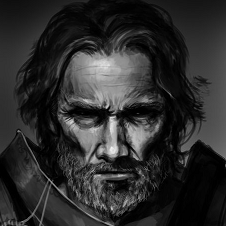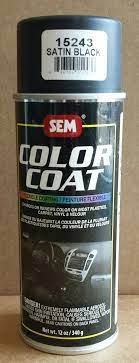-
Posts
39,259 -
Joined
-
Last visited
Content Type
Profiles
Forums
Events
Gallery
Everything posted by Ace-Garageguy
-

50s Caddy engines
Ace-Garageguy replied to junkyardjeff's topic in General Automotive Talk (Trucks and Cars)
All the first gen Caddy OHV V8 engines from the '49 331 cu.in. version through the 365 and early 390 (through 1962) are very similar visually. The very best totally stock one in kit form comes in the Monogram '59 Eldo. -
-
Toddlers should be kept well away from flamethrowers.
-
-
-
A Panhard bar adds additional positive control over the movement side-to-side of the rear axle relative to the chassis, which makes launches more predictable and consistent. Those long parallel lift bars don't do enough in that regard. A Watts link would be preferable, as there's zero side "sway" with a Watts setup, but available space required and additional complexity are also considerations, along with a possible unsprung-weight increase. A single transverse leaf spring suspension also benefits from limiting side-to-side relative movement, as there's a considerable amount of lateral "slop" due to the effects of the shackles and the bending action out at the tips of the springs. NOTE: The early use of the term "sway bar" did not refer to the "anti-roll bar" as we know it today, but rather to a Panhard bar applied to "tail-dragger" customs with transverse springs, where excessively long shackles had been used to achieve much of the lowered stance. Without a "sway bar" to control side-to-side movement, some of them killed their operators due to unanticipated rear-steering effects having terminal consequences. Even cars with parallel leaf springs will benefit from a Panhard or Watts setup if precise handling and/or chassis tunability are goals. The '47 Caddy, for instance, was factory-equipped with a Panhard bar. EDIT: For maximum benefit, a Panhard bar needs to be as long as possible, as it still allows the axle to travel side-to-side somewhat, relative movement being defined by the arc described by the radius the bar-end pivot points impart. Longer bar=longer radius=smaller arc.
-
"Show me the money" was a popular phrase to rebleat decades ago, but "follow the money" is the best way to prove corruption.
-
Heard the one about the sailor who walks into a bar with a manatee in a dress?
-
Called for jury duty, I was.
-
-
-
-

Any chance this article could be found online somehow?
Ace-Garageguy replied to Monty's topic in The Off-Topic Lounge
https://www.hemmings.com/stories/article/herb-adams He's also the author of one of the most useful books concerning chassis engineering and chassis tuning. -

Ford H series, very old build.
Ace-Garageguy replied to Repstock's topic in Model Trucks: Big Rigs and Heavy Equipment
Real pretty. -
I think somebody once said "you can lead a fool to a dictionary, but you can't make him use it".
-

What defines “skinny” front tires?
Ace-Garageguy replied to dusty_shelf's topic in Model Building Questions and Answers
I can't recall when Frontrunners came on the market...but it's pretty easy to carefully sand the lettering off the sidewalls. Start with 180 grit wet to knock it down, then work progressively through 400, 600, 1200, 1500 wet. Work carefully and it'll look perfect...though you might have to spray the completed tires with something like SEM black to get an even color. -

What defines “skinny” front tires?
Ace-Garageguy replied to dusty_shelf's topic in Model Building Questions and Answers
15" tires intended for small or compact cars were the norm for gasser fronts. Think about 4.5-5.60X15 in real bias-ply tire size. Around 5+ mm in scale width. Got a VW Bug or Porsche 356 kit lying around? For the period you show above, Pirelli (and other) radials for small European cars were common too. -
Very nice. Many many years back, a friend-of-a-friend's band used one of these to tour the country.
-
"Cadillac arrest" is when your heart stops while getting chased by the po-lice doing 120 in your Eldo.
-
In general, the 24-stud "59" series engines built from '46-'48 had the water outlets in the center of the heads. Later 24-stud "8BA" engines built between '49 and '53 had them at the front. The heads can be interchanged however, though water passages have to be modified. Earlier 21-stud heads also had the water necks at the front of the heads, and can not be used on a later 24-stud block. The 8BA is by far the most desirable, as it lacks the cast-on bellhousing of earlier engines, making it much easier to adapt a variety of transmissions. It also has internal improvements.
-
At least he was a happy idiot.












